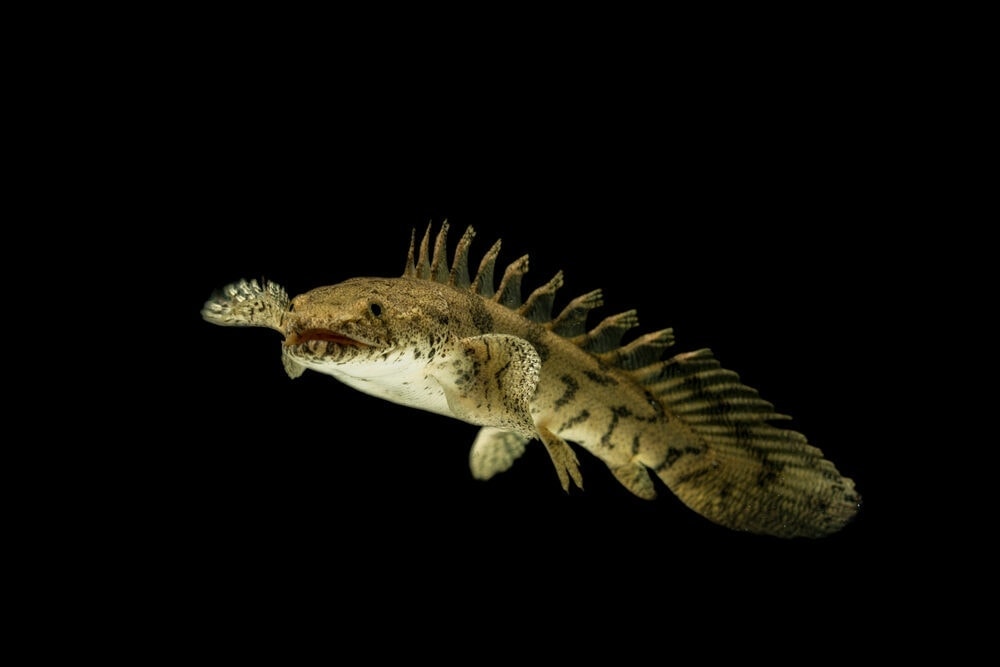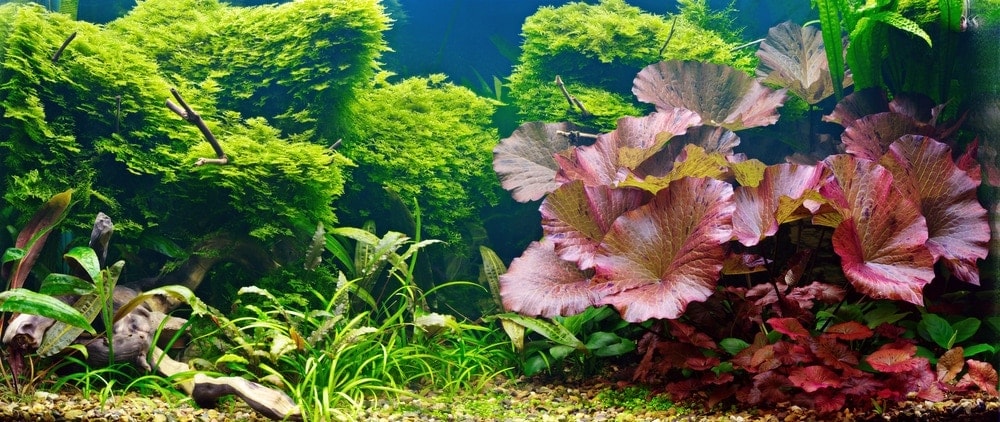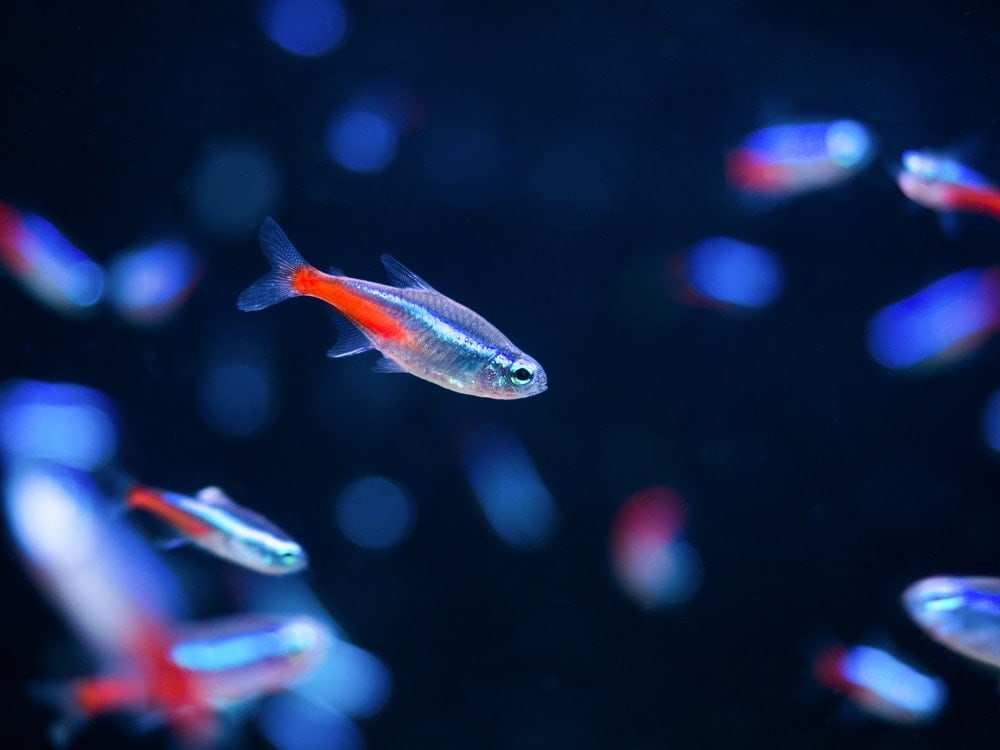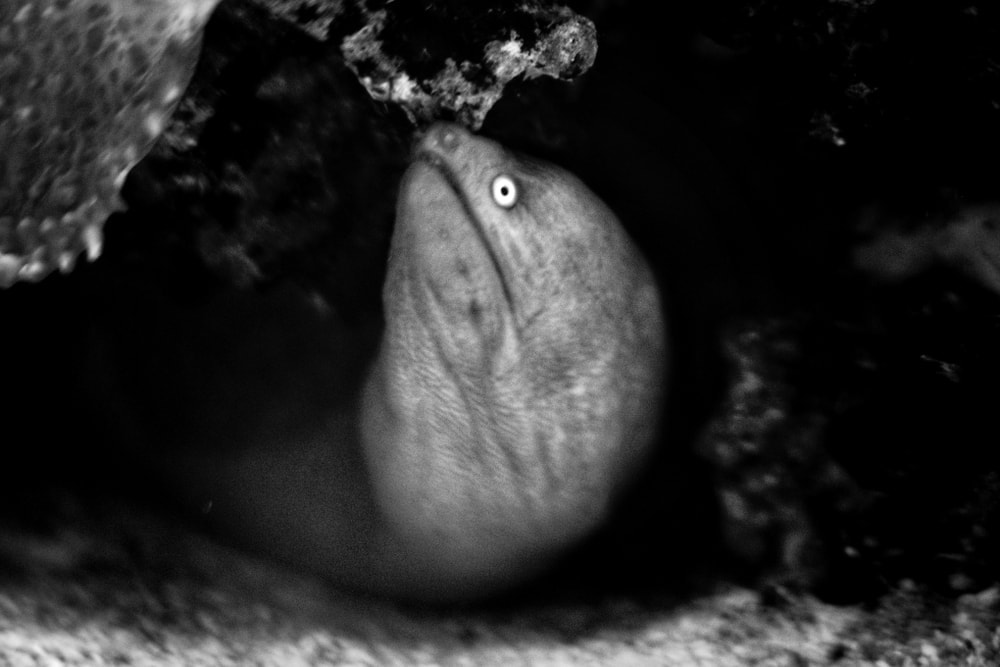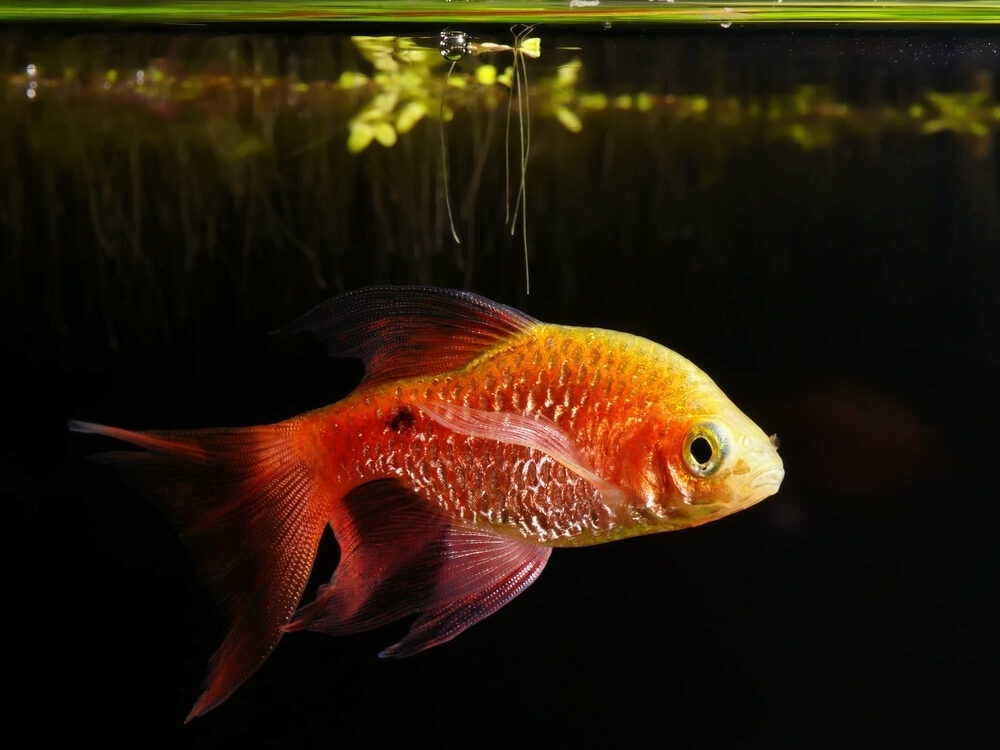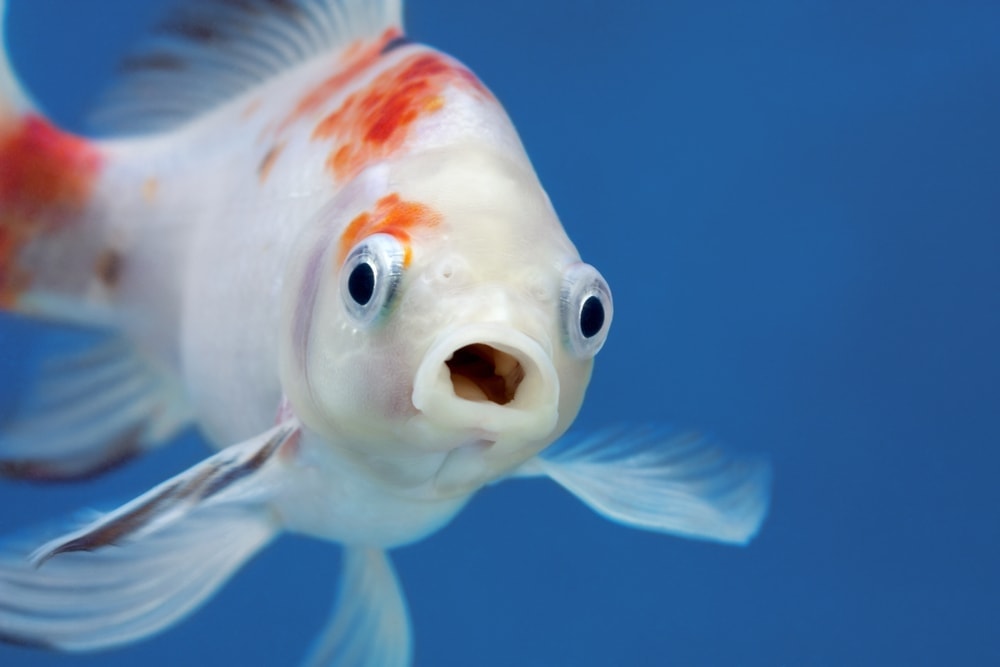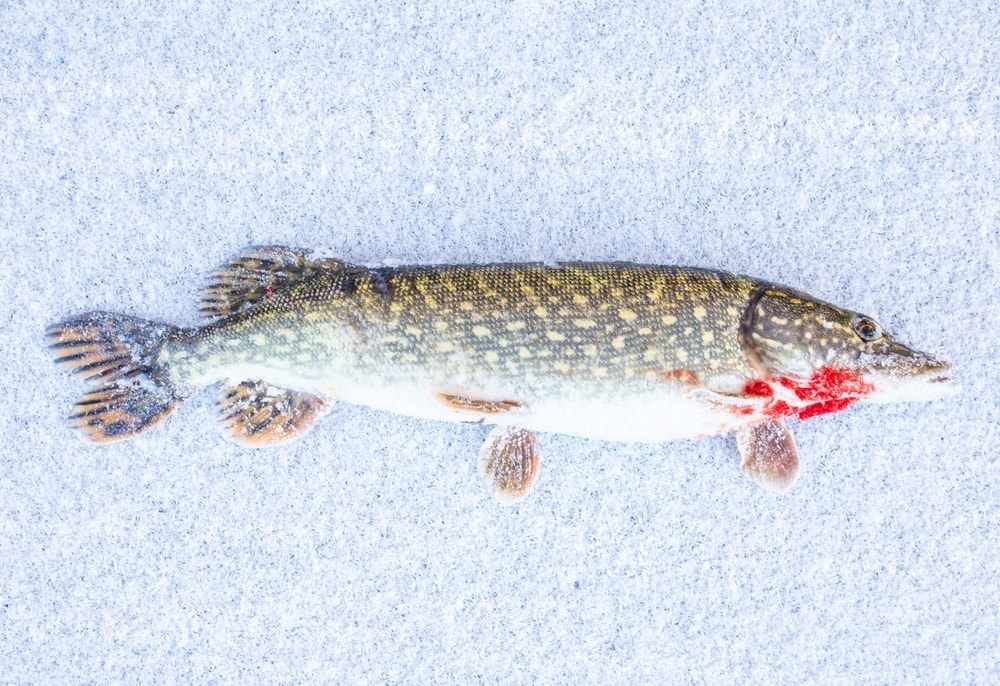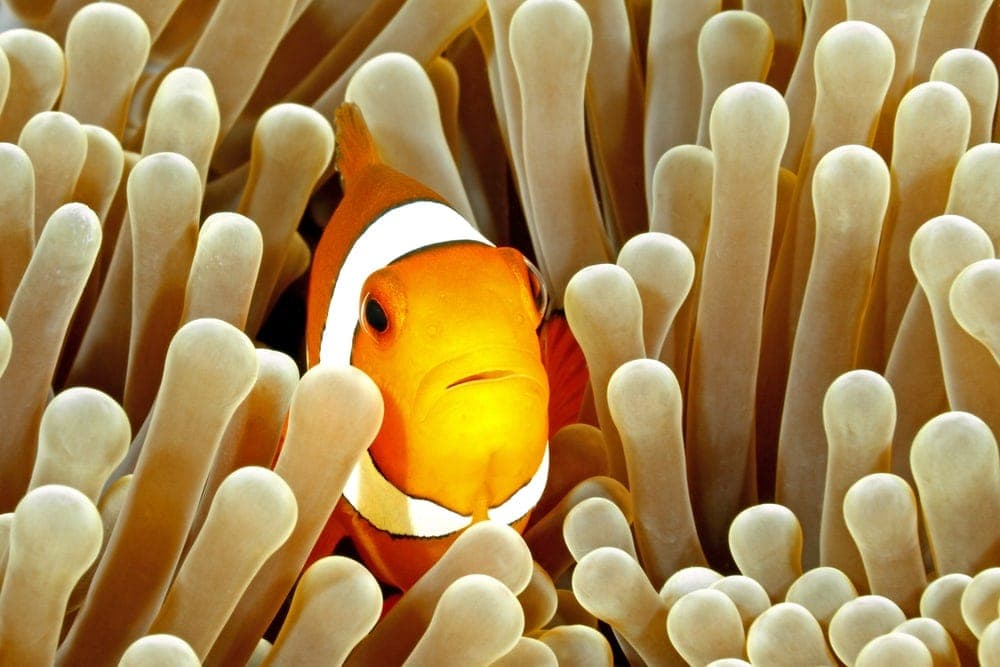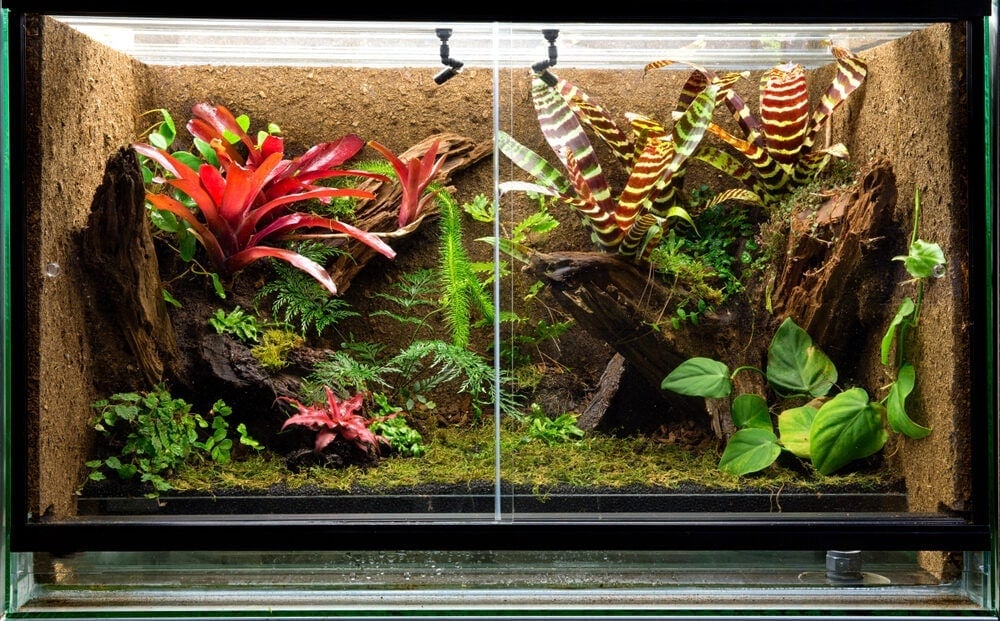If you want a freshwater fish with some real character, the bichir is an excellent overall choice. This fish comes in a variety of types and colors, so you’ll have plenty of options.
You will need to learn a number of things about these beautiful fish before you can keep them.
Types of Bichirs
1. Albino Bichir
This particular variety of bichir has a completely white body and red eyes. Keep in mind that they are quite rare, so they can be expensive and difficult to find.
2. Delhezi Bichir
The only physical characteristic that separates delhezi bichirs from the rest is their color. These fish come in a wide range of color patterns, sporting green, grey, and even yellow.
3. Dinosaur Bichir
The dinosaur bichir is very common and has a mostly grey body. They are slightly smaller than other types of this fish. Some of them have a very light grey coloration that is close to being white or a pale pink.

4. Saddled Bichir
These fish have a pale yellow coloration, and sometimes black stripes going down the length of their body. They can get very large, up to 2.5 feet long. One of the unique characteristics of this variety is their lower jaw, which sticks out a bit more than other types.
5. Ornate Bichir
The ornate bichir can grow up to two feet long once it has reached full maturity. It is mostly yellow with some areas of black, specifically on their dorsal fins.
Behavior
Bichir fish are not extremely aggressive, but they can quickly become agitated and lash out. This is precisely why it is not a good idea to keep them with any smaller fish. They are fairly active most of the time, preferring the bottom of the tank with regular trips to the surface for air.
Keep in mind that these fish are nocturnal, which means that you will see the most activity from them at night. They become increasingly active as feeding time approaches. If you want a fish that is entertaining and active, this is definitely a good choice to consider.
Natural Habitat
Bichirs can be found in freshwater bodies such as ponds, smaller lakes, floodplains, swamps, estuaries, and rivers. Twelve species of this fish come from the tropical regions of Africa.
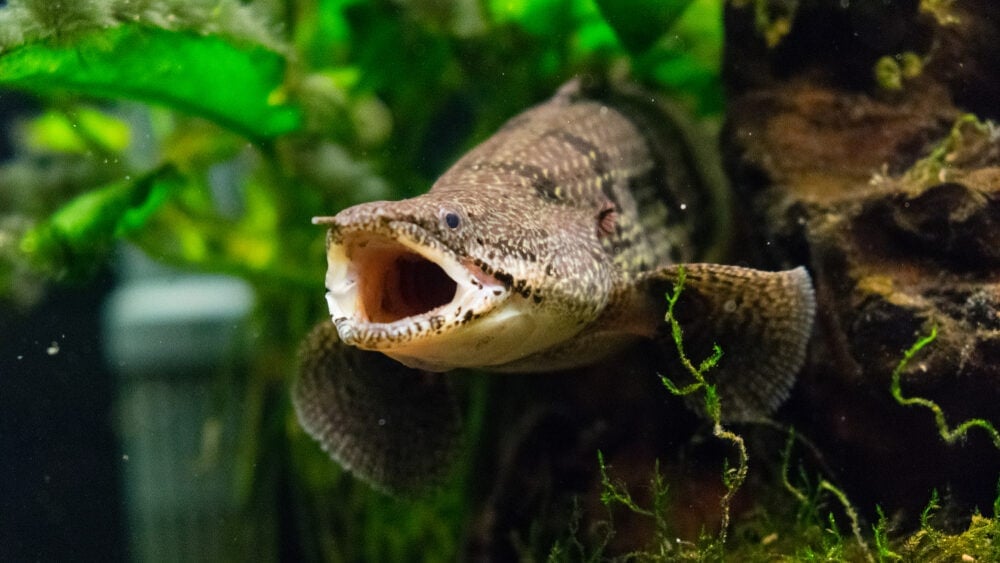
Bichir Care Guide
1. Tank Setup
The relatively large size and highly active nature of bichir fish demands a large tank. You’ll need an aquarium that is at least 90 gallons for just one of these fish. It is imperative that they have enough space to swim around freely without feeling too restricted.
While these fish aren’t very shy, you should still put in some caves and other things they can use as hideaways when the mood strikes them. It is also important that you use sand for the substrate, as this mimics their natural environment. Some people use gravel, but this material is too abrasive for these fish.
It is a good idea to have a cover on the tank, as these fish are known for being skilled jumpers.
2. Water Conditions
You should keep the water in your bichir’s tank at a temperature of 74 to 82 degrees Fahrneheit. It should also be kept within an acidity range of 6.2 to 7.8. Soft water is definitely best for these fish.
It is imperative that you change the water in your fish’s tank fairly regularly. You’ll also need to get a test kit and keep close track of all the levels. This is a crucial part of keeping your bichir healthy over the long term.
3. Bichir Tank Mates
As we mentioned above, it is not a good idea to keep small fish with bichirs. Some of the best tank mates for these fish include the African knife, Silver Dollar, and oscar fish.
4. Bichir Food
Bichirs need a good amount of protein in their diet on a daily basis. In addition to the dry food you give your fish, they should also be given Bloodworms, shrimp, ox heart, and nightcrawlers. All of these foods are packed with protein and will help with keeping them healthy. A combination of frozen and live foods is absolutely necessary when it comes to proper bichir care.
Bichir Breeding
It is very difficult to breed bichirs, as it takes a lot of special care. You will need to keep the fish you wish to breed in soft water with a low acidity level. Keeping your fish in cooler water can help with encouraging breeding, but there are no guarantees.
Common Health Problems
Ornate bichirs tend to have issues with bacterial infections, so that is something you will have to be aware of if you own this variety. You can significantly reduce the chances of such infections by keeping your fish’s water clean and changing it out regularly. If you keep your fish in dirty water, it is very likely that they will acquire a bacterial infection at some point.
Some of the more common signs of bacterial infections in fish include:
- Bloody patches on the body
- White film on the fins
- Tattered fins
- Cloudy eyes
- Open sores
Conclusion
- There are several varieties of bichirs—Albino, Delhezi, Dinosaur, Saddled, and Ornate.
- These fish can grow up to 2.5 feet long.
- The albino bichir is the rarest variety and highly sought after.
- Bichir fish are not very aggressive most of the time, but they can become erratic when kept with smaller fish.
- You will need to have a 95-gallon tank minimum for keeping bichirs. They need plenty of room to swim around, as they are quite active most of the time.
- Keep the temperature of the water in your fish’s tank between 74 and 82 degrees Fahrenheit.
- Soft water is best for bichirs.
- These fish tend to get along well with other larger fish, including Oscars, Silver Dollars, and the African Knife fish.
- Make sure that your bichir gets lots of protein in its diet with bloodworms, nightcrawlers, and shrimp. You should also give them dry food.
- Ornate bichirs can easily develop bacterial infections if their water is not changed on a regular basis.
